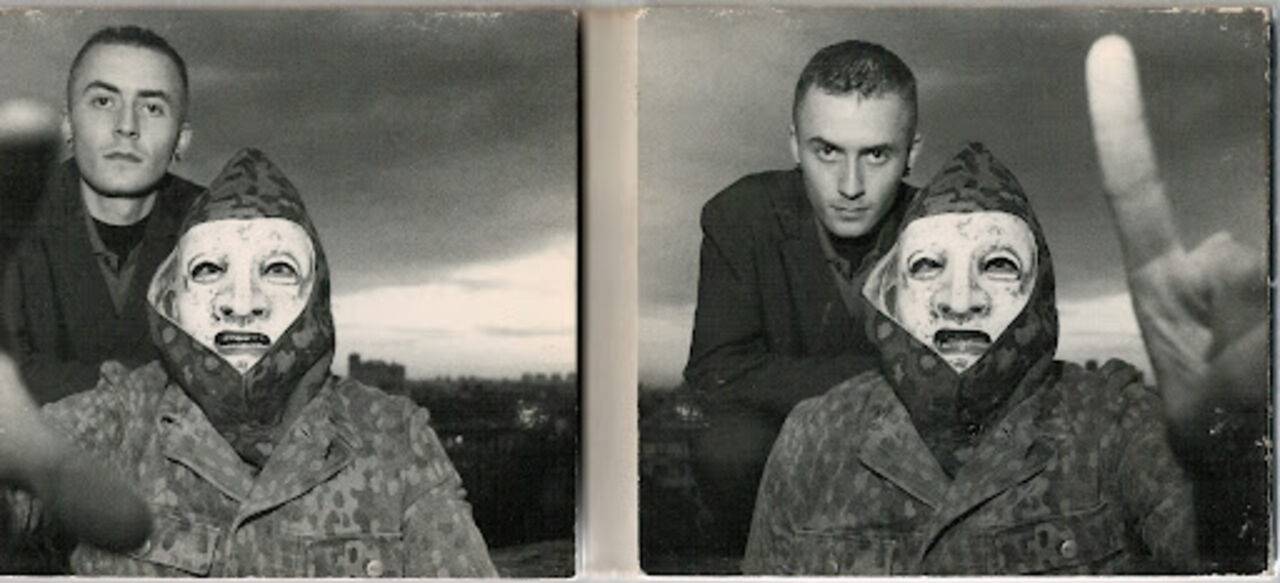
Death In June
Biography
Death in June is a British folk and experimental band founded in 1981 by Douglas Pearce, along with Patrick Leagas and Tony Wakeford. Douglas Pearce and Tony Wakeford had been members of the politicized Punk group Crisis, which had formed in 1977. Patrick Leagas, a member of Runners from 84, joined them to form Death in June, which quickly moved away from the Punk scene and began to add electronic elements and martial percussion to their sound. Their words remained imprinted with poetry and a state of political emergency that was found in the Crisis recordings. Tracks like Holy Water and State Laughter , on their first album The Guilty Have No Pride , showed a growing fascination with political systems. Tony Wakeford left Death in June in January 1984 after a concert in Paris, and Patrick Leagas would also make an album later in April 1985, after a short tour in Italy. Leagas, now called Patrick O-Kill, formed Sixth Comm, and Tony Wakeford formed Dark Folk's band; Sol Invictus. Since then, Death in June was comprised of Douglas P. and external stakeholders. Pearce will mix his interest in politics with a more esoteric approach to his work, notably under the influence of David Tibet (Current 93 ) from the album Nada . It is also David Tibet who will decisively lead Di6 on the lands of Folk music. Over the years and albums, Pearce has collaborated with some of the most influential artists in the musical underground, industrial, neofolk, and experimental/noise scenes. We can count Forseti, Boyd Rice, Rose McDowall, Albin Juliu s, John Balance (Coil), Michael Cashmore, Simon Norris, and James Mannox. Douglas Pearce regularly plays in concert with artists who are considered to be part of this genre, and some are sometimes invited on Death in June albums. Pearce expressed admiration for Friedrich Nietzsche's writings as well as for northern myths. He also repeatedly claimed that the greatest inspirations in his life came from Yukio Mishima and Jean Genet. Of course, the fact that these two writers were homosexual is not "innocent": Douglas Pearce has never hidden his sexual orientation, and the homo-erotic aspects of war, camaraderie, uniform have always been confessed and promoted by the artist; much more than any political ideals, dislike Di6's critics, as well as some of his fans. D.Pearce, regularly cites as part of these youth influences, the Love , The Byrds groups and it is undeniable that Joy Division's influence is largely responsible for the band's style at its beginning. Death in June has since its creation used a variation of Totenkopf or Death's Head as a badge. Douglas P. repeatedly stated that the use of this symbol was in no way an apology of the atrocities committed by the Nazis. In any case, the use of this symbol, filled with negative associations, has a very personal meaning, like each of the aspects of Death in June, which has demonstrated an appreciation for a certain self-discipline and the primordial role of aesthetics. A great concern has always been given to the packaging of albums in such a way that each disc is as much an art object as its content. Many of them were edited in very limited presses, engraved with esoteric and symbolic messages, and distributed to a small audience in various underground settings. This has provided Di6 with a substantial audience worldwide. And on the other hand, its rarest records are sold at sometimes excessively high prices to collectors and fans. A lot has been said about the origins of the name Death in June. It is commonly accepted as an allusion to the Night of the Long Knives from 29 to 30 June 1934, where the SA were "purged" by the Nazi regime. The name would not express, according to Douglas P, a single idea, on the contrary, this multi-faceted name remains open to all interpretations. Many, however, accuse Death in June of being neo-Nazi, fascist, and racist, and sometimes even homophobic. It is true that Death in June often finds itself in situations that bind him to the Nazi period. However, Douglas Pearce is homosexual, and he has already played in Israel, as shown by the presence of the two flags (Israeli and Gay Flag) on the official website of Di6. One can understand that Death in June actually plays on appearance and provocation, through a certain controversial aesthetic.Note that at his concert in Brest in May 2005, organized by the industrial label Steelwork Maschine, Douglas Pearce announced that it would be the last concert. He then deserted the scene for 6 years until the announcement on 8 September 2011 of the organisation of a European tour on the occasion of the 30th anniversary of the band. Unfortunately, some left-wing extremist associations, particularly in France, continue to perceive Death in June as a flagship of Nazi and fascist ideas and do everything possible to ensure that the group does not occur.
.
Discography
No releases available for this band.

